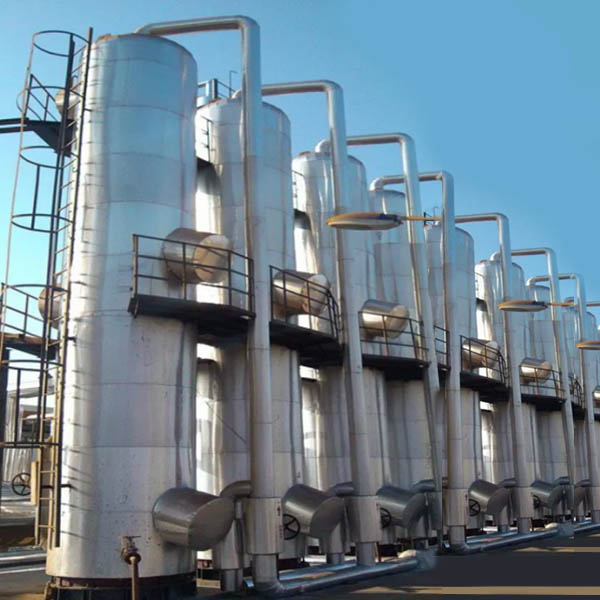A Comprehensive Analysis of the Working Principle, Core Structure, and Industrial Applications of Distillation Columns
Release time:2025-08-27
Visits:119
Distillation columns are core equipment in chemical production, mainly used to separate different components in liquid mixtures. Their working principle is based on the differences in the volatility of each component. After the mixture is heated, the light components (substances with low boiling points) vaporize and rise in the column, coming into contact with the descending cold liquid multiple times to achieve a dynamic equilibrium of partial condensation and vaporization. Eventually, high-purity light components are concentrated at the top of the column, while the heavy components (substances with high boiling points) are concentrated at the bottom. This process relies on the countercurrent contact and mass transfer between the gas and liquid phases to ensure efficient separation.
Core Structure and Function
Distillation columns usually consist of a column shell, trays/packings, feed devices, condensers, and reboilers. As a pressure vessel, the column shell needs to meet requirements such as corrosion resistance and high-temperature resistance, and the materials are mostly stainless steel or carbon steel. The mass transfer components inside the column are divided into two categories:
1. Tray Structure: This includes sieve trays, bubble cap trays, and valve trays. Separation is achieved through the cross-flow contact of gas and liquid on the trays. For example, sieve tray columns have low costs and uniform gas dispersion, but their operating flexibility is relatively small; bubble cap tray columns have high stability and are suitable for handling materials prone to coking.
2. Packing Structure: Such as random packings and structured packings, the separation efficiency is improved by increasing the gas - liquid contact area. Packed columns have small pressure drops and low liquid holdup, but they have high requirements for the initial liquid distribution and need to be equipped with special distributors.
Industrial Applications and Column Type Selection
Distillation technology is widely used in fields such as petroleum refining, chemical synthesis, pharmaceuticals, and food processing:
- Petroleum Industry: To separate fractions such as gasoline and diesel from crude oil.
- Pharmaceutical Field: To purify raw materials and intermediates.
- Brewing Industry: For example, to purify alcohol in brandy production.
For different process requirements, the column type needs to be reasonably selected:
- Plate Columns: Suitable for scenarios with large throughputs and high operating flexibility, but with slightly lower efficiency.
- Packed Columns: Suitable for high - efficiency separation and energy - saving requirements, especially in low - pressure systems.
Technology Development Trends
In recent years, distillation technology has been accelerating its iteration towards intelligence and energy conservation:
1. Intelligent Control: Optimize temperature and pressure parameters through sensors and algorithms to improve separation accuracy and reduce energy consumption.
2. Structural Innovation: New packing designs (such as high - efficiency structured packings) and modular internals can shorten the installation cycle and improve mass transfer efficiency.
3. Cleaning and Maintenance: Some patented technologies introduce automatic cleaning devices, which reduce fouling through rotating spraying or mechanical scraping and extend the service life of the equipment.
With the progress of materials science and process simulation technology, the energy - efficiency ratio and adaptability of
distillation columns continue to improve, making them indispensable key equipment in modern chemical separation processes.

